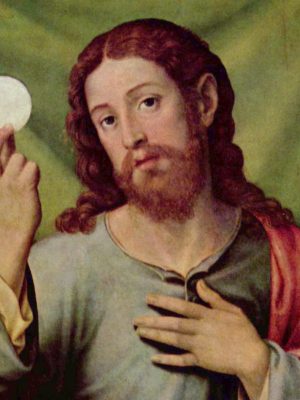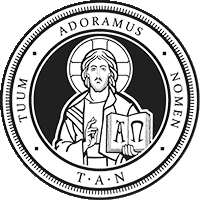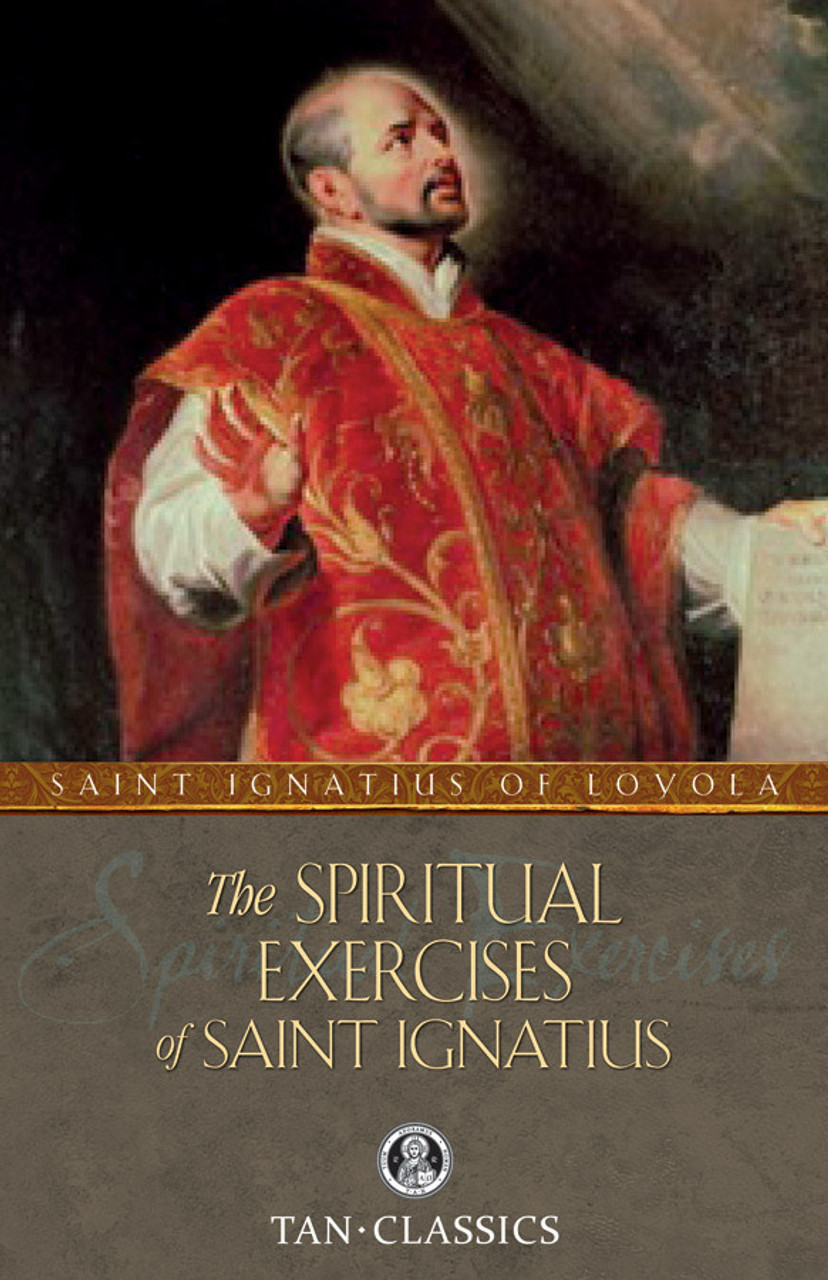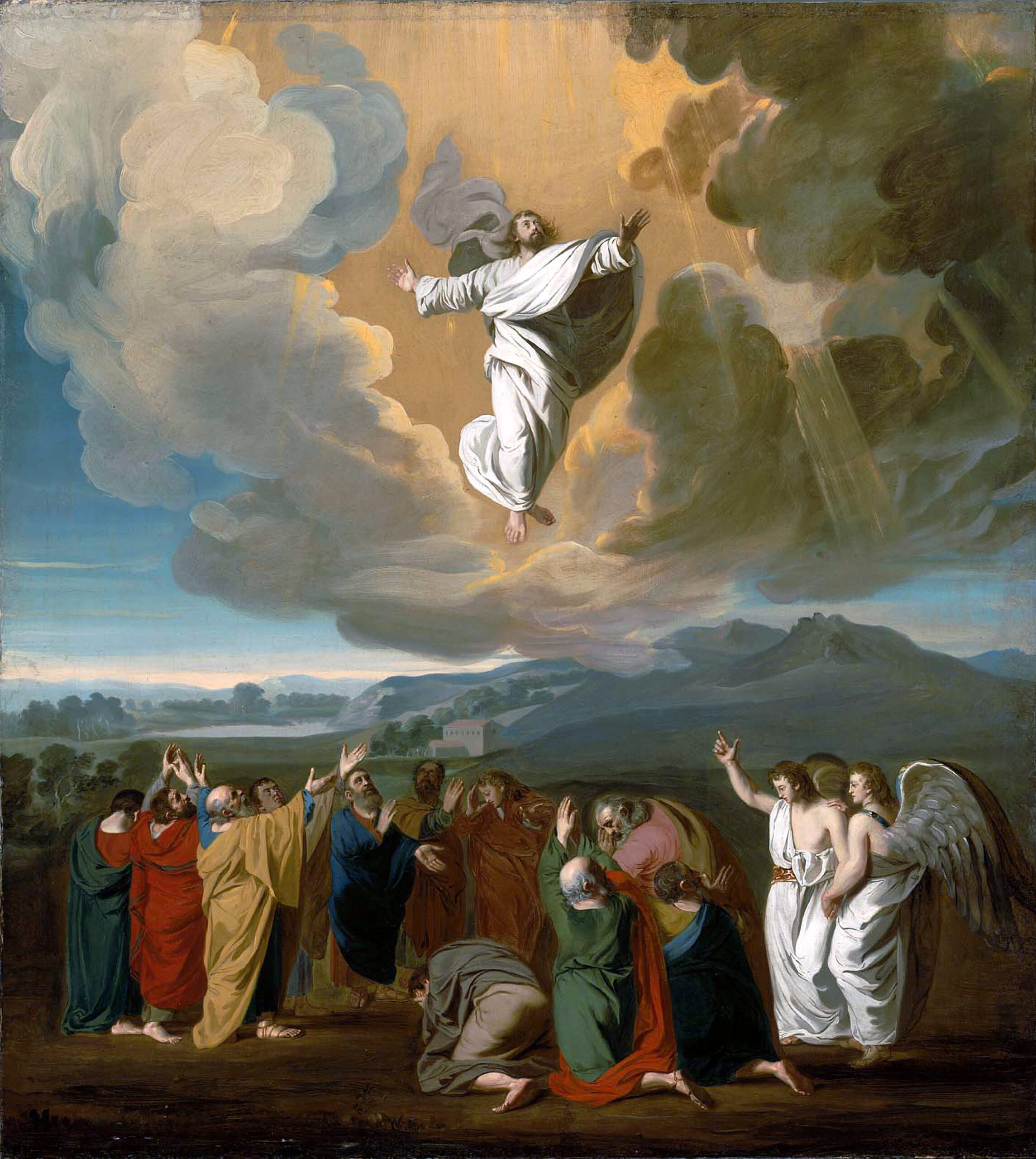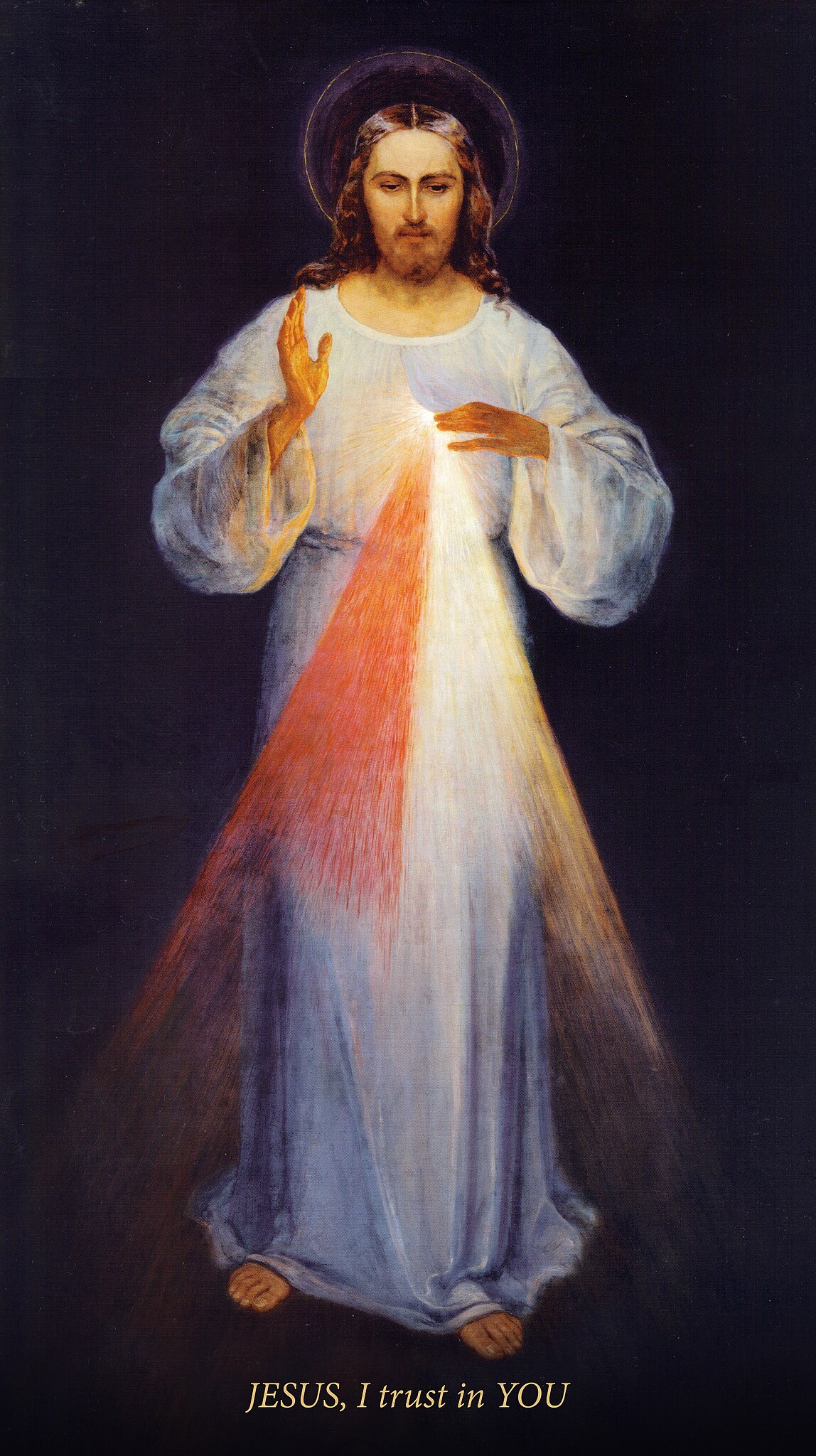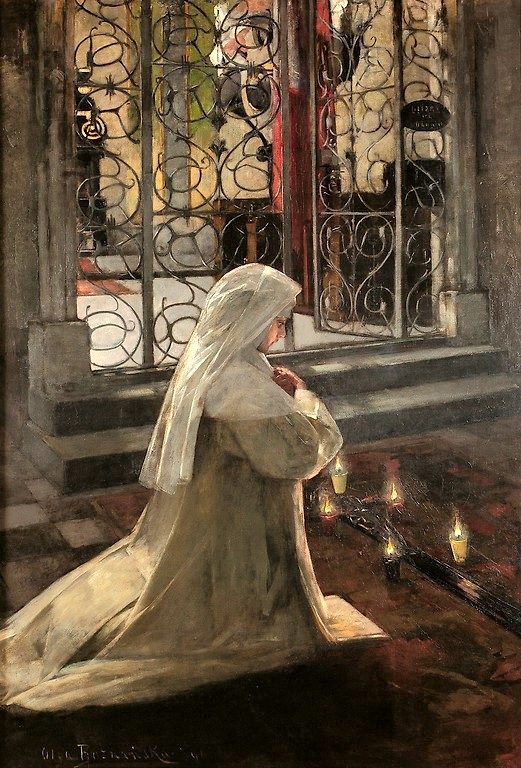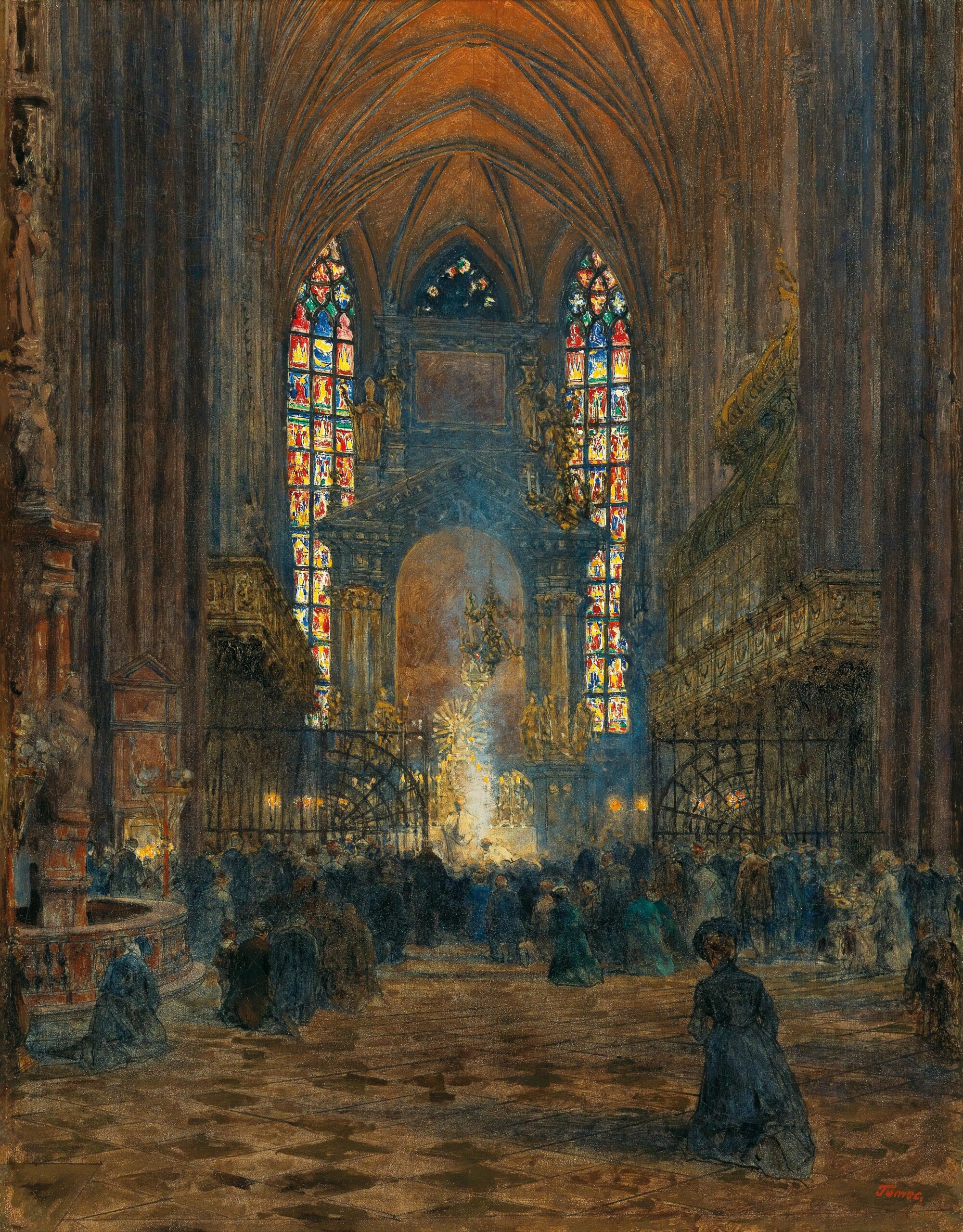The Spiritual Exercises of St. Ignatius of Loyola outline the rigorous self-examination and spiritual meditations St. Ignatius set forth. Readers will learn how to make a new beginning on the path to holiness, repenting of their sins and attaining freedom from Satan’s power.
Meditation
First Prelude
Represent to yourself the Last Supper, and Our Saviour seated at the same table as His Apostles and by His all-powerful word changing the bread into His own body and the wine into His own blood.
Second Prelude
Ask a lively faith in the mystery of the Eucharist, and a tender love for Jesus present in the tabernacle.
First Point
The Presence of Jesus Christ in the Eucharist
Contemplate in spirit Our Saviour present on our altars, and, after having adored Him with profound respect, ask Him why for eighteen hundred years He has remained shut up and, as it were, a captive in our tabernacles. Is it to redeem the world? But the redemption was accomplished on Calvary. Is it solely to confer grace upon us? But from the height of heaven Jesus Christ could sanctify us without there being any need of His presence on earth. Why, then, remain in the midst of us? Because He loves us, and all His delight is to be with the children of men: “My delights were to be with the children of men” (Prov. 8:31).
And how does He dwell among us? He dwells under the veils of the Sacrament, for fear that the splendor of His glory should keep us away from His person, either through fear or respect. He wishes to dwell, not merely in a single city or a single sanctuary, but in all the temples of the Catholic Church, so that there shall not be any Christian who may not enjoy converse with Him. Finally, He wishes to inhabit our temples, not on certain days or certain solemnities only, but all days, all hours, all moments, so that there shall not be any person in His family who cannot come at all times before Him, to ask and to receive light, strength and consolation.
Second Point
The Life of Jesus Christ in the Eucharist
Consider that Our Lord reproduces in His Eucharistic life all the states and all the virtues of His mortal life.
1. His mysterious birth on the altar at the voice of the priest represents His birth at Bethlehem. In the solitude of our churches you find the deserted stable where Mary gave to the world its Saviour; in the sacramental species, the swaddling clothes that enveloped the Divine Child; in the indifference of men for the Sacrament of Divine Love, the conduct of the inhabitants of Bethlehem toward the Messiah.
2. The tabernacle represents the humble house at Nazareth. What was the life of Jesus at Nazareth? A life of retreat, of prayer, of obedience. What is His life in the tabernacle? Contemplate it.
3. Recall to yourself what the Gospel relates of the public life of the Son of God. You will still meet with all this in the Eucharist. In His public life Jesus taught, and He supported His teaching by miracles. In His Eucharistic life what does He do? He teaches still, no longer by His words, but by His example—by His poverty, by His humility, by His flight from the world. He says always, “Blessed are the poor in spirit. Woe to the world” (Matt. 5:3, 18:7). He still works miracles; He still restores sight to the blind, life to the dead—that is, the light of faith to those who walk in the darkness of the world, the life of grace to those who are buried in the grave of sin.
4. The suffering life of Our Saviour on Calvary is perpetuated in the Sacrament of the Altar. On the altar, as on the cross, the same trials: the same sadness of the heart of Jesus Christ at the sight of men’s crimes; the same abandonment of Jesus Christ by those souls who ought to be most faithfully attached to Him; the same insults on Calvary by the Jews and on the altar by heretics and impious men; the same torment of His sacred body, equally crucified by His executioners on Calvary and on the altar by the profane; in fine, on Calvary and at the altar the same examples of patience, of detachment, of charity, in a word, of the most heroic sacrifices.
Third Point
The Union of Jesus Christ with Us in the Eucharist
Consider that the Eucharist, according to the idea of the Fathers, is an extension of the mystery of the Incarnation. In the Incarnation, the Word, it is true, unites Himself to us in an ineffable manner; but much more wonderful is the union He contracts with us in the Eucharist. In the Incarnation He takes a nature like ours; He enters into our family, He makes Himself one of us—in a word, our brother. In the Eucharist He goes farther; it is no longer to a nature like ours He unites Himself, He unites Himself to each one in particular; it is no longer to our family He allies Himself, it is to our person.
Closing Prayers
Anima Christi…
Pater Noster…
Ave Maria…
ooo
This article is taken from a chapter in The Spiritual Exercises of Saint Ignatius by Saint Ignatius of Loyola which is available from TAN Books.


